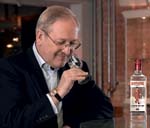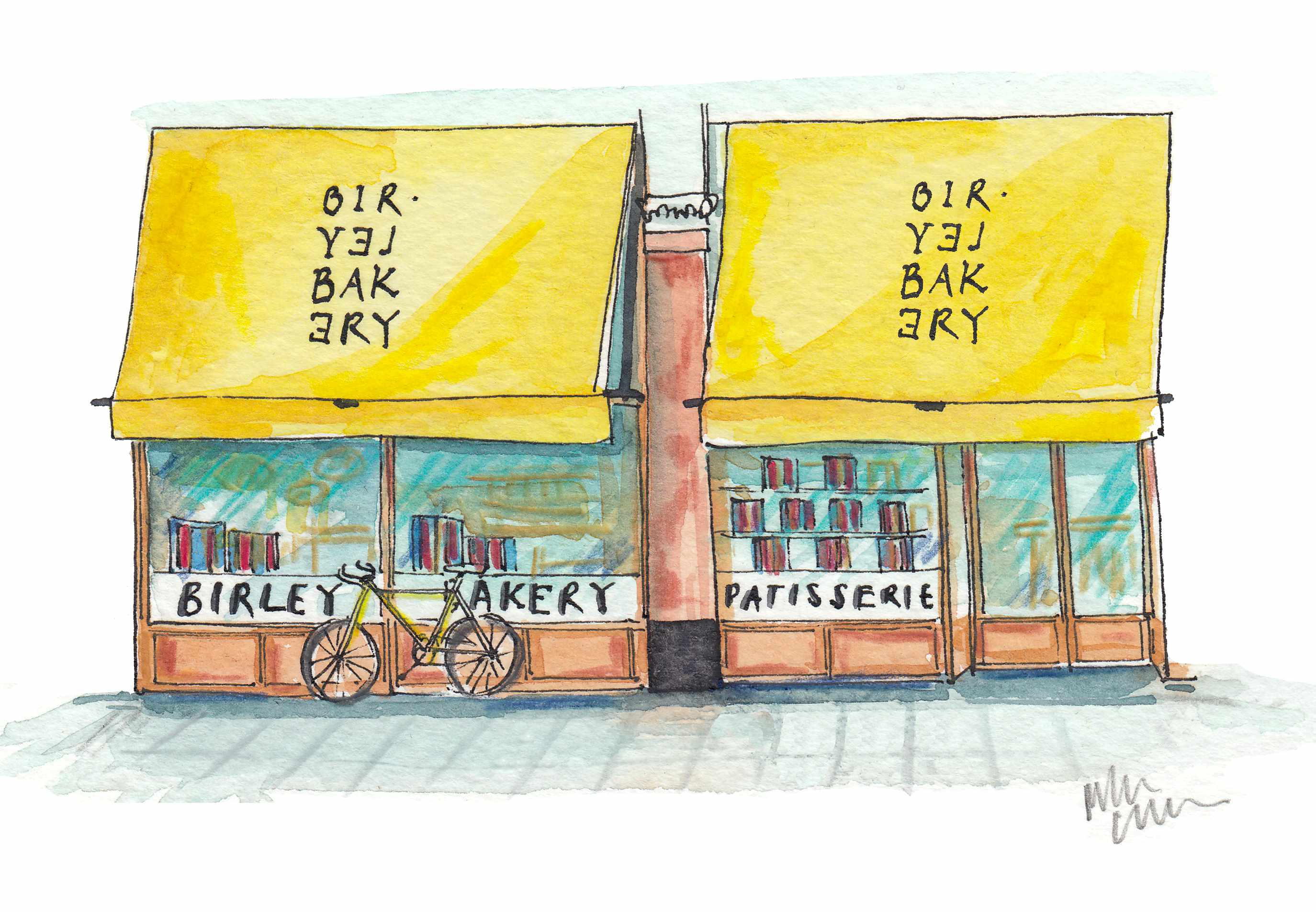Interview: Beefeater's Desmond Payne
Beefeater gin uses juniper berries, coriander seeds, Chinese liquorice, lemon and Seville orange peel, among other ingredients, Desmond Payne tells Leslie Geddes-Brown


uniper berries are arriving in Desmond Payne's office at the Beefeater gin distillery in South London, up to 150 samples from the Mediterranean. Juniper grows wild there, and the berries are picked by peasants who beat the trees with a stick and collect the ones that fall. 'One man might pick 500lbs, but I need 50 tons.' Therefore, even if one of the samples is perfect, he always buys four or five batches in case the first runs out. Mr Payne knows all the potential problems because, this month, he celebrates 40 years in gin 'like a pickled onion'. Juniper is the only consistent 'botanic' that is put into grain spirit to make the drink, but Beefeater also uses coriander seeds from Bulgaria, Belgian angelica root, Chinese liquorice, and Italian orris root, plus, from Spain, almonds, lemon and Seville orange peel. Mr Payne must find samples of all of these to create the gin recipe designed by Beefeater's founder, James Burrough, in 1863. Today, a portrait of Mr Burrough frowns down on the distiller to ensure he doesn't tamper with the mix. 'His eyes follow me round.'
Mr Payne went into the wine trade because his father, formerly of the Indian Army, decided, without consultation, that his son would follow him. 'I said I didn't want to go into the army, but into the wine trade. He took three seconds and then agreed.' At 59, Mr Payne is charming, urbane and funny. His mother, from Co Cork, was descended from Tom Park, the first Irishman to cross Africa, with H. M. Stanley; an ancestor on his father's side was a cartoonist. Mr Payne worked at Harrods when it had its own wine cellars below the store, before moving to the wine merchant Seager Evans in 1967 as a management trainee. Two years later, he was posted to Plymouth gin, with a complimentary monthly ticket to London, second class, in case he felt banished. He was there for 25 years, ending up as chief distiller and distillery manager.
In 1995, after a series of mergers, came the call to Beefeater. 'Plymouth made 8,000 cases of gin a year, Beefeater 2.3 million. But I had to persuade myself of its quality before I moved.' This wasn't difficult. 'Plymouth drunk with water worked for me, because it was drier and earthier; Beefeater is fresh, clean and citrussy. It has a vitality to it. It's like the Duracell rabbit it keeps delivering after other gins have stopped.'
The citrus flavour comes from dried lemon and Seville orange peel. 'The fruit is picked, rinsed in a bucket of water, and peeled in a single piece. It's then hung on a washing line to dry in the sun for five days. I want a ton of the orange peel, and it's not a sophisticated operation.' This mixture of artisanal botanicals, he thinks, makes for Beefeater's charm. Despite its bad-boy reputation, perceived as a cross between Hogarth's Gin Lane and speakeasy Chicago, gin is as craftsman-made as brandy or malt whisky. 'The reality is that, unlike most gins, all the flavours are introduced and steeped in grain spirit for 24 hours before it is distilled.'
He has several favourite gin tipples. Firstly, gin and tonic, but with lime ('lime is more aggressive than lemon, but Beefeater can cope'). The gin should be put in the freezer and the tonic in the fridge.' The ice, he adds, is necessary, but for its clunking. It shouldn't melt. 'The last sip should be as good as the first.' Second is Negroni equal parts of gin, Campari and red Italian vermouth 'a wonderful drink, simple, balanced and flavourful'. Third is a martini. 'I used to like dry only as much martini as Angostura bitters but now I like a bit more, with the gin and the glass from the freezer, and a snap of lemon peel for the aroma, definitely stirred not shaken.' Lastly is a gimlet: two parts gin, one of lime-juice cordial, shaken on ice until it is emulsified and a delicious light green. 'That's for lunch in the garden on a hot day. Simple and clean - why complicate things? 'I thoroughly enjoy the work, it's very sociable. Long may it last I'm certainly not about to leave.' A toast to that.
Sign up for the Country Life Newsletter
Exquisite houses, the beauty of Nature, and how to get the most from your life, straight to your inbox.
Country Life is unlike any other magazine: the only glossy weekly on the newsstand and the only magazine that has been guest-edited by HRH The King not once, but twice. It is a celebration of modern rural life and all its diverse joys and pleasures — that was first published in Queen Victoria's Diamond Jubilee year. Our eclectic mixture of witty and informative content — from the most up-to-date property news and commentary and a coveted glimpse inside some of the UK's best houses and gardens, to gardening, the arts and interior design, written by experts in their field — still cannot be found in print or online, anywhere else.
-
 'That’s the real recipe for creating emotion': Birley Bakery's Vincent Zanardi's consuming passions
'That’s the real recipe for creating emotion': Birley Bakery's Vincent Zanardi's consuming passionsVincent Zanardi reveals the present from his grandfather that he'd never sell and his most memorable meal.
By Rosie Paterson
-
 The Business Class product that spawned a generation of knock-offs: What it’s like to fly in Qatar Airways’ Qsuite cabin
The Business Class product that spawned a generation of knock-offs: What it’s like to fly in Qatar Airways’ Qsuite cabinQatar Airways’ Qsuite cabin has been setting the standard for Business Class travel since it was introduced in 2017.
By Rosie Paterson